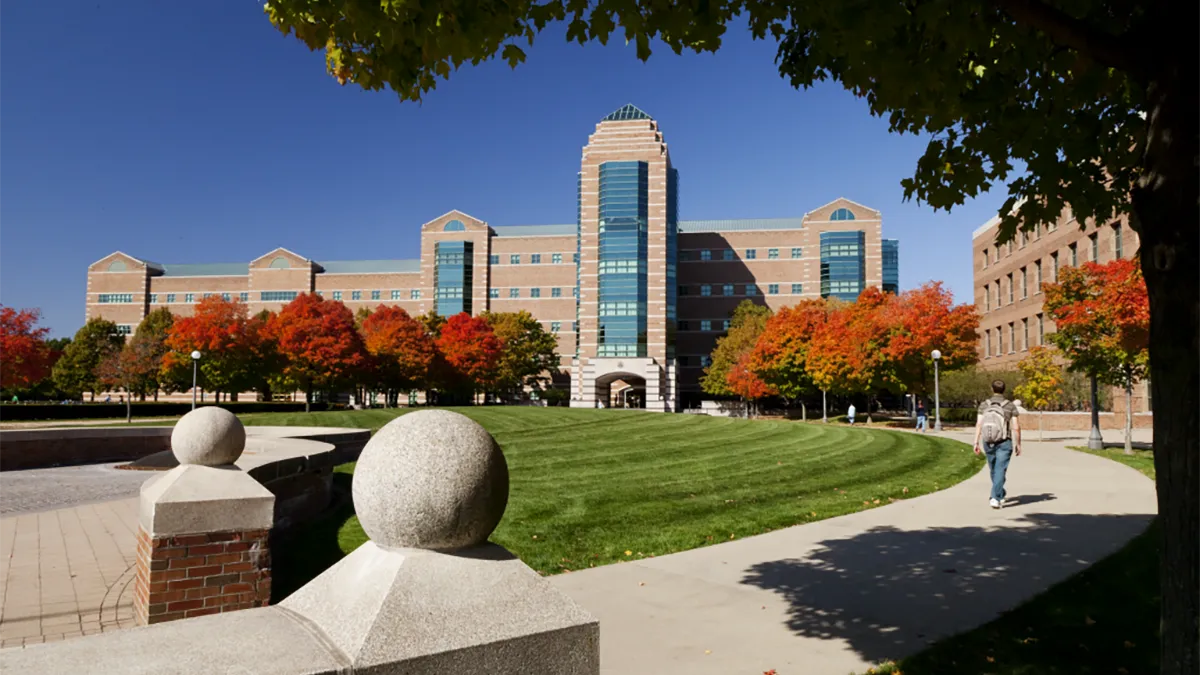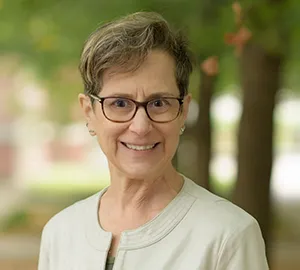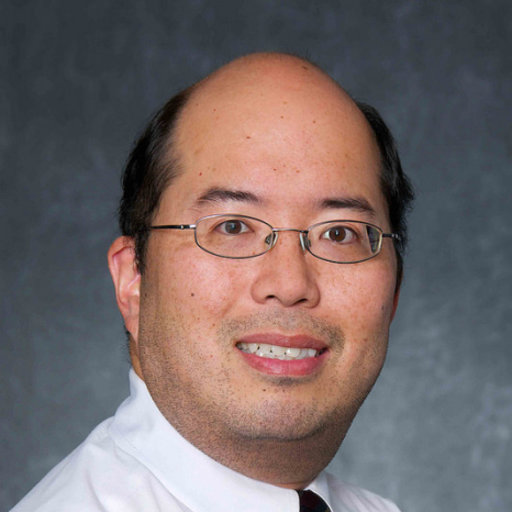Last Updated on October 31, 2024 by Laura Turner
In a previous article, I discussed the advantages engineering-trained applicants bring to the health professions. For this article, we asked the admissions team at the Carle Illinois College of Medicine (CI MED) about the unique aspects of their curriculum for prospective engineering-trained applicants and their advisors.
We contacted Nora Few, Jessica Williams, and Joe Bradley from CI MED to provide more details.
Tell us what makes the Carle Illinois College of Medicine curriculum unique.
The curriculum at CI MED differs from that of a traditional medical school. While a traditional medical curriculum is primarily concerned with how things are and sometimes how they came to be, CI MED wants students to consider and explore how things could be better.
The best way to start thinking about the CI MED curriculum is to consider our agreed-upon definition of a physician innovator.
A CI MED physician innovator is a leader trained via interdisciplinary immersion to develop transformative [i.e., high-value, human-centered, and appropriate] healthcare solutions.
How are courses and content organized?
At Carle Illinois, a team of three faculty designed each of our Organ Systems Courses, ensuring that they integrate foundational sciences, clinical sciences, engineering, and innovation while interweaving bioethics and medical humanities, health systems science, lifespan health, and social and structural determinants of health.
During the first eighteen months of the Organ Systems Courses, students start their innovation journey with four strategic approaches.
The first is BioDesign, a Stanford framework focused on healthcare-related innovations. BioDesign gives students a framework within which they identify the problem, generate ideas, and then implement one of those ideas. In addition to BioDesign, the students gain experience and practice in empathic design. Empathic design uses tools to understand further the experiences of others (authentic human behavior). This helps the students understand the role of empathy in the problem-identification process and in developing innovative solutions.
The second is BiCEP (for Basic Science integrated with Clinical Science, Engineering, and Professionalism). With a faculty facilitator, small groups of eight students can discuss a broad range of concepts that integrate the physiological, pathological, pharmacological, and biopsychosocial variables associated with diagnosing and treating a clinical case. Students use peer-reviewed resources to learn and share information with others, assess the implications of the social determinants of health, and evaluate appropriate engagement with the patient.
Data analysis skills are also honed through structured MEDI (Medicine, Engineering, Discovery, and Innovation) sessions, and all student teams are evaluated on their summary reports and presentations. Often, they design possible solutions for Challenge Labs in a defined clinical need area using available online tools (2022 Neuroscience Challenge Lab story).
At the end of their first year, Carle Illinois students can participate in MORE3. For six weeks in June and July and then continuing until graduation, MORE3 students take a deeper dive into some of their interests through electives and possibly graduate certificates currently under development. In addition to traditional clinical electives, CI MED offers electives in engineering and innovation. Students may also create their project-based electives with a faculty mentor focused on engineering and innovation. While some ideas may involve physical devices (such as tools, sensors, and hardware), innovation can also address process and workflow, policy, medical education, social determinants of health, business aspects of healthcare, and technology or data…the list is endless.
How do CI MED students acclimate and transition to clinical practice as “innovators”?
All this innovation work during the first 18 months prepares our students to move on to innovation in real-time through the IDEA (Innovation, Design, Engineering, and Analysis) course and the night clinic quality improvement project during their Major Clinical Year. During the major clinical year, our students leave their clinical immersion most Friday afternoons and meet for the IDEA course. For each required clerkship, students identify a challenge they have observed and suggest a solution. In this way, student innovation is anchored in their experience and the work they are doing in the clinical environment, leading to innovation that is high value plus human and patient-centered. Friday afternoon is an opportunity to pitch that solution and receive feedback.
The IDEA course also incorporates Engineering Partners, engineering faculty who are affiliated with a certain clinical area. The Engineering Partners join the students and the in-patient care team at a mutually agreeable time for in-patient hospital “Engineering Rounds” for one or two hours a week. Engineering Partners also join meetings with students and a clinician once a week, where both faculty can assist the students in developing potential solutions for the challenges they identified. The IDEA course provides a safe space where students can freely release their curiosity, creativity, and innovation. Students have a similar opportunity through the Quality Improvement Project during the family medicine continuity night clinic. Here students develop a quality improvement project focused on improving patient, clinician, and/or staff experiences in health care for their clinic.
Students develop projects in the Capstone and Data Science courses during the fourth year. Many of the projects in these two courses were identified during the IDEA course, although that is not a requirement. Now, there is an opportunity for application. During capstone and/or data science, a small group of medical students collaborate with campus students and units (engineering, business, and community health are most common). The deliverables for these classes are truly exciting, and many of them can be found on the CI MED website.
We also host an annual campus-wide entrepreneurship experience through the HealthMaker Lab. Many student-developed ideas are honed for our Fall Health Make-a-Thon, which serves as a springboard for many student innovations for future venture capital pitch competitions. The top ideas receive cash prizes and resources to support their emerging business ventures. Gaining insight into the steps of documenting patentable innovations and securing funding to prototype and upscale is invaluable. Additionally, students may participate in the campus-wide entrepreneurship competition, Cozad, in the healthcare innovation track.
So engineering and innovation are found throughout the four years of our curriculum, starting with BioDesign and Empathic Design, MEDIs, BICEP, and Challenge Labs while studying the organ systems, IDEA and QI during the major clinical year, and capstone and/or data science in year four.
Student innovations by CI MED students
Outside of class, CI MED students are grouped into Innovation Pods, supported by basic science, clinical, and engineering faculty mentors. Each Innovation Pod is named for distinguished Illinois engineering, medicine, and innovation alumni. This group connects student support, educational learning resources, and broader University and Carle Health resources.
What advice would you give someone interested in attending the CI MED College of Medicine?
Our website helps explain our expectations for incoming students. We have a checklist identifying 11 competency areas; applicants must demonstrate at least nine before matriculation. These competencies can be fulfilled through formal coursework, professional experience/employment, certifications, or research experience. AP or IB credit can be accepted if one takes additional courses that build on the subject at a college or university level.
Our program looks for future students who align best with our institutional mission and educational design. The above descriptions should appeal to those with coding, industry, or clinical research data analysis experience in addition to traditional premed clinical and community service experiences. We advise applicants to compile a portfolio of evaluation letters that speak to their academic and technical proficiency, leadership, teamwork, work ethic and engagement, and potential impact as an innovator.
How about the MD/PhD program (Medical Scholars Program)?
If you are interested in pursuing an MD/PhD at Carle Illinois (called the Medical Scholars Program), we do not require that you identify yourself as an MD/PhD applicant on AMCAS, nor will our process consider MD/PhD essays you might be using for other programs. We only consider applications to the Medical Scholars Program from within our medical student body. PhD studies can be done in biomedical sciences, engineering, physical sciences, humanities, and social sciences.
What should prospective applicants know about your application process?
Our admissions team embraces transparency about our policies.
- Our program only considers US citizens or permanent residents, and we establish our minimum MCAT as 498 (note our matriculant 10th percentile is 507, and the median is 513 [MSAR 2024, accessed September 17, 2024]).
- We pre-screen applications before sending out secondary applications to selected candidates.
- All admitted students are considered automatically for available merit scholarships, while other financial aid is contingent upon your Free Application for Federal Student Aid application.
- We look carefully at your BCPM (Biology, Chemistry, Physics, Math) coursework, especially in fulfilling our competencies. We are happy to talk to applicants who require guidance in meeting our competencies.
Please review our answers on the FAQ page. View our Virtual Visit videos and read Student Perspectives and Alumni Voices. Our student handbook is also available online. Make a private appointment if you have questions. We want you to be confident that completing your medical education at Carle Illinois College of Medicine will set you up for success.
Reference
Overton, K.D., Coiado, O. & Hsiao-Wecksler, E.T. Exploring the Intersection of Engineering and Medicine Through a Neuroscience Challenge Laboratory. Medical Science Educator. 32, 1481–1486 (2022). https://doi.org/10.1007/s40670-022-01676-w




It’s inspiring to see how Carle Illinois College of Medicine is fostering innovation and entrepreneurship among health professionals. The focus on merging medicine with engineering and technology creates a unique environment for students to think beyond traditional boundaries. This approach is crucial in today’s rapidly evolving healthcare landscape, where creativity and forward-thinking are key to addressing complex health challenges. I’m excited to see how these future physicians will drive positive change through their entrepreneurial mindset.